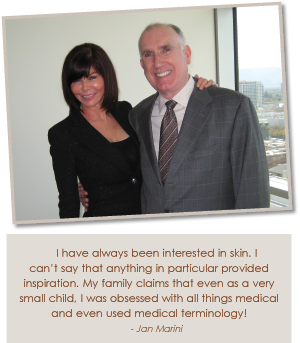Especially for a new business, anticipating and averting classic inventory problems will prevent your sales from losing altitude, and keep client satisfaction sky-high.
1 – PLEASE BRING YOUR CALCULATOR TO ITS FULL UPRIGHT POSITION—in other words, you won’t need it. While clients love the personal touch, there is no longer any place for quaint, boutique-style manual accounting, including “eye-balling” stock and issuing handwritten receipts. You must computerize your system to link your inventory to your purchasing process. For instance, spa or salon software may be used to automatically generate a Purchase Order after you have sold a specified quantity of a particular SKU. At the end of the month, review all activity. Note discrepancies and shrinkage—these form a significant part of your map for the future.
Speaking of maps, also note WHERE in the store—what section of square footage—best-selling products are displayed. Work with this “sweet spot” when merchandising; new products, for example, should be displayed there. This sweet spot is often on the right, about ten paces from the entrance, at about eye-level or a little higher.
2 – CHECK IT OUT. Create a log-in/ log-out protocol for the professional products used in the treatment room. It’s a good idea to keep the room stocked with the basics. Each time an empty container is pulled from the room and replaced with a fresh item, the transaction is recorded. Management may then review these numbers at the end of the month; each therapist’s numbers should be about the same.
3- BE A NEW BEST FRIEND to every client and browser. Shoplifting is the wild card in inventory control, yet shoppers don’t appreciate being hovered over by suspicious salespeople. Instead of lurking, coach the team on the floor to make immediate eye contact, engage, step into the client’s air-space in a friendly manner, and ask open-ended questions (“How has your skin been feeling lately, with this weather?”— Whatever that weather may be--) which can lead naturally to sales while the sales associate subtly monitors any disappearances from the shelf.
4 –THINK SOMETHING’S FISHY? Diversion is a huge problem in the professional skin care industry, just as it has long been in the hair care arena. Diversion is especially damaging to clients, since the best skin care products are developed and intended to be prescribed by licensed skin therapists; the client who buys an acne product, cleanser, or exfoliant off the Internet without this advice is being shortchanged. For this reason, we set maximum purchase limits on products, meaning that we won’t let someone come in and snap up all 25 tubes of our best-selling moisturizer. Unless they’re preparing an elephant for a VOGUE cover shoot, no one needs that much moisturizer in a single transaction!
5- KNOW YOUR MANUFACTURER. This is perhaps the biggest “Duh!” factor of inventory control. How long will it take the manufacturer to get the product into your hands from the time you order? The difference between two days and five days can lose you a lot of sales. If the manufacturer is inconsistent, you have two choices: stock up like a crazed, camo-wearing survivalist and hope that your current sales patterns will justify the investment, or find a manufacturer who can give you reliable turnaround.





 Those who know Jan Marini refer to her as a visionary. While Jan might agree in principle, she sees this characterization as both a strength and a weakness. She envies those who are able to savor the moment. Where others view life in snapshots that capture real time, Jan sees broad borderless landscapes and endless possibilities. She does not see a product, she sees a business and in that same instance her mind is flooded with the business plan and all the accompanying details. Even when she is not envisioning empires, she is never satisfied with the status quo.
Those who know Jan Marini refer to her as a visionary. While Jan might agree in principle, she sees this characterization as both a strength and a weakness. She envies those who are able to savor the moment. Where others view life in snapshots that capture real time, Jan sees broad borderless landscapes and endless possibilities. She does not see a product, she sees a business and in that same instance her mind is flooded with the business plan and all the accompanying details. Even when she is not envisioning empires, she is never satisfied with the status quo.